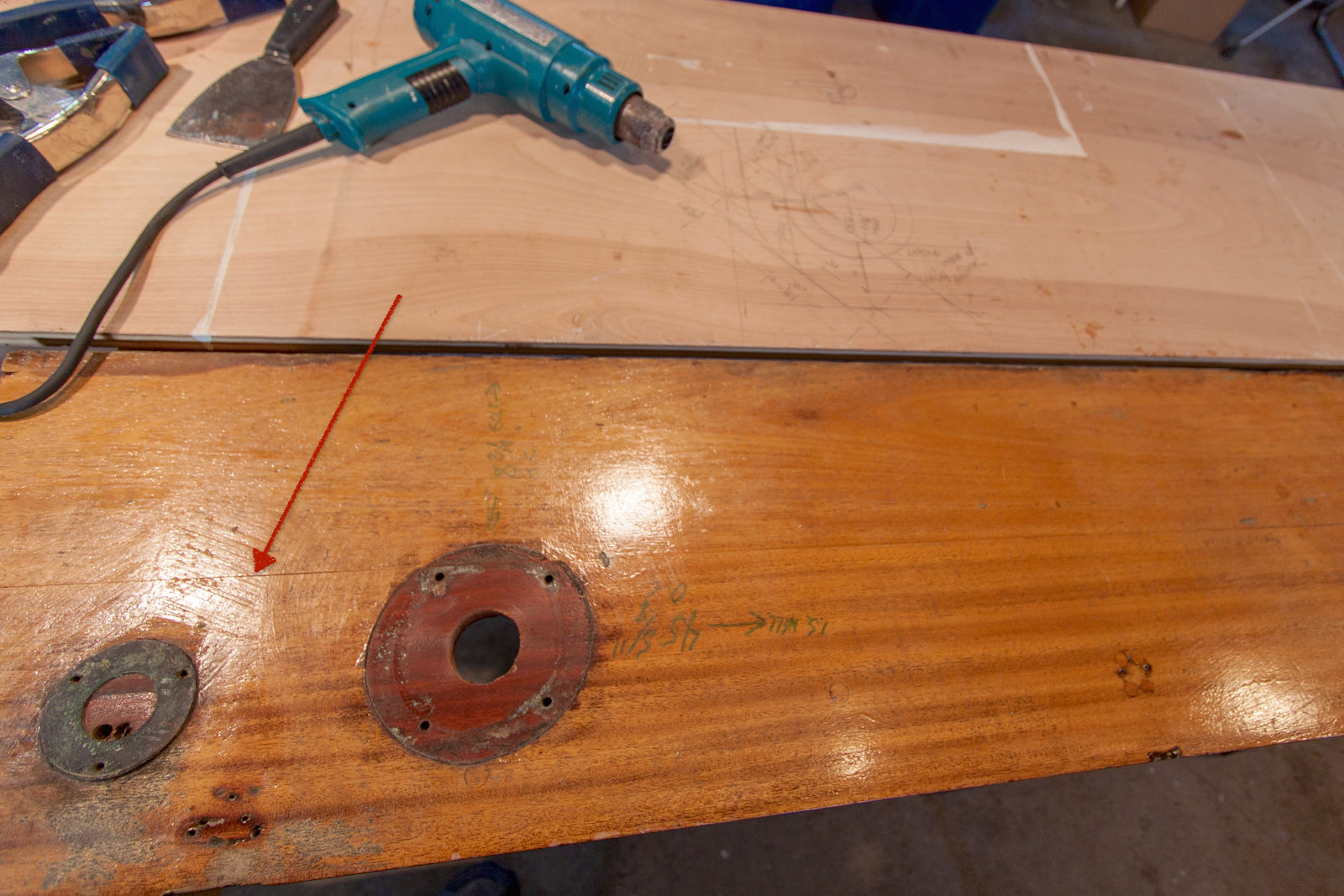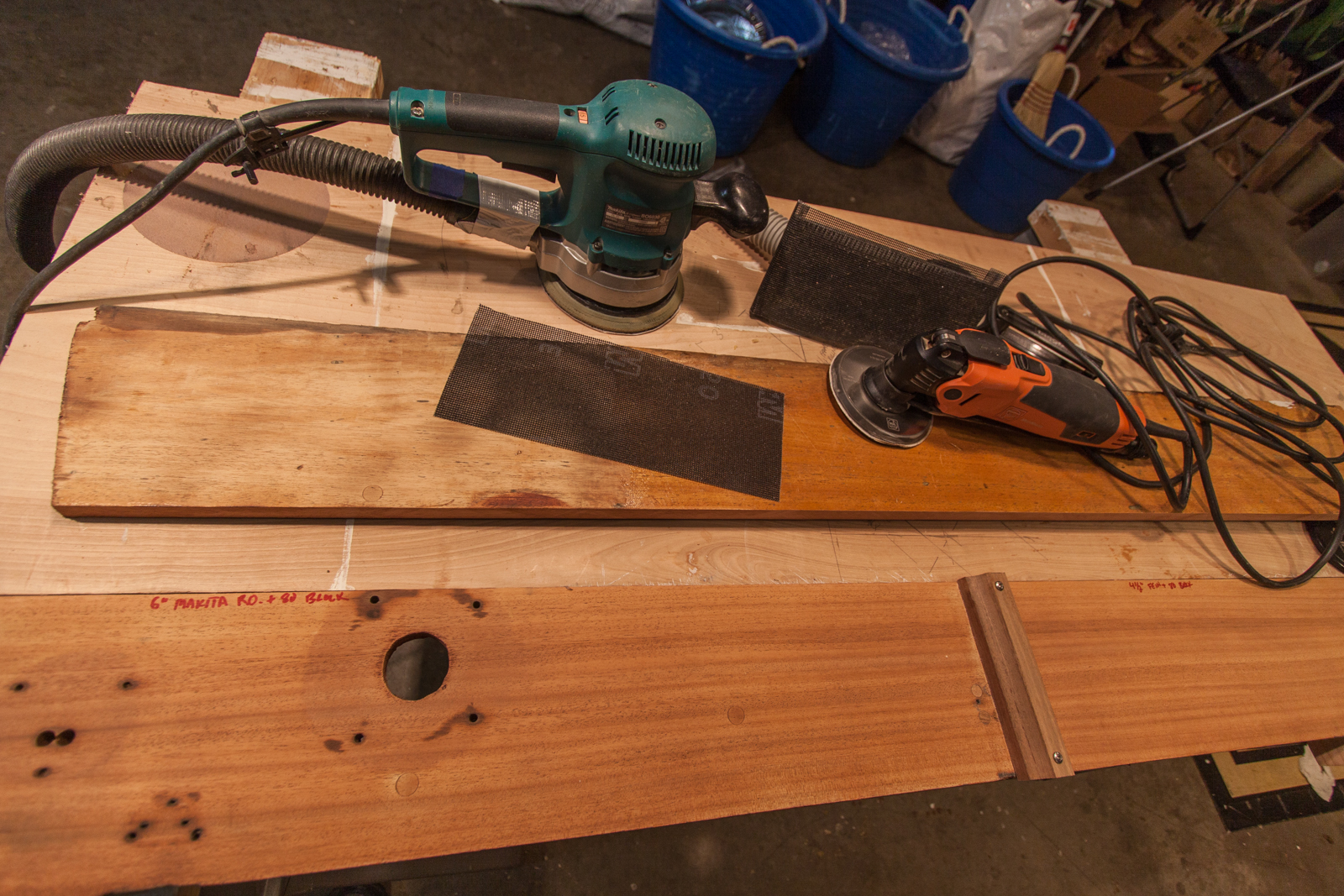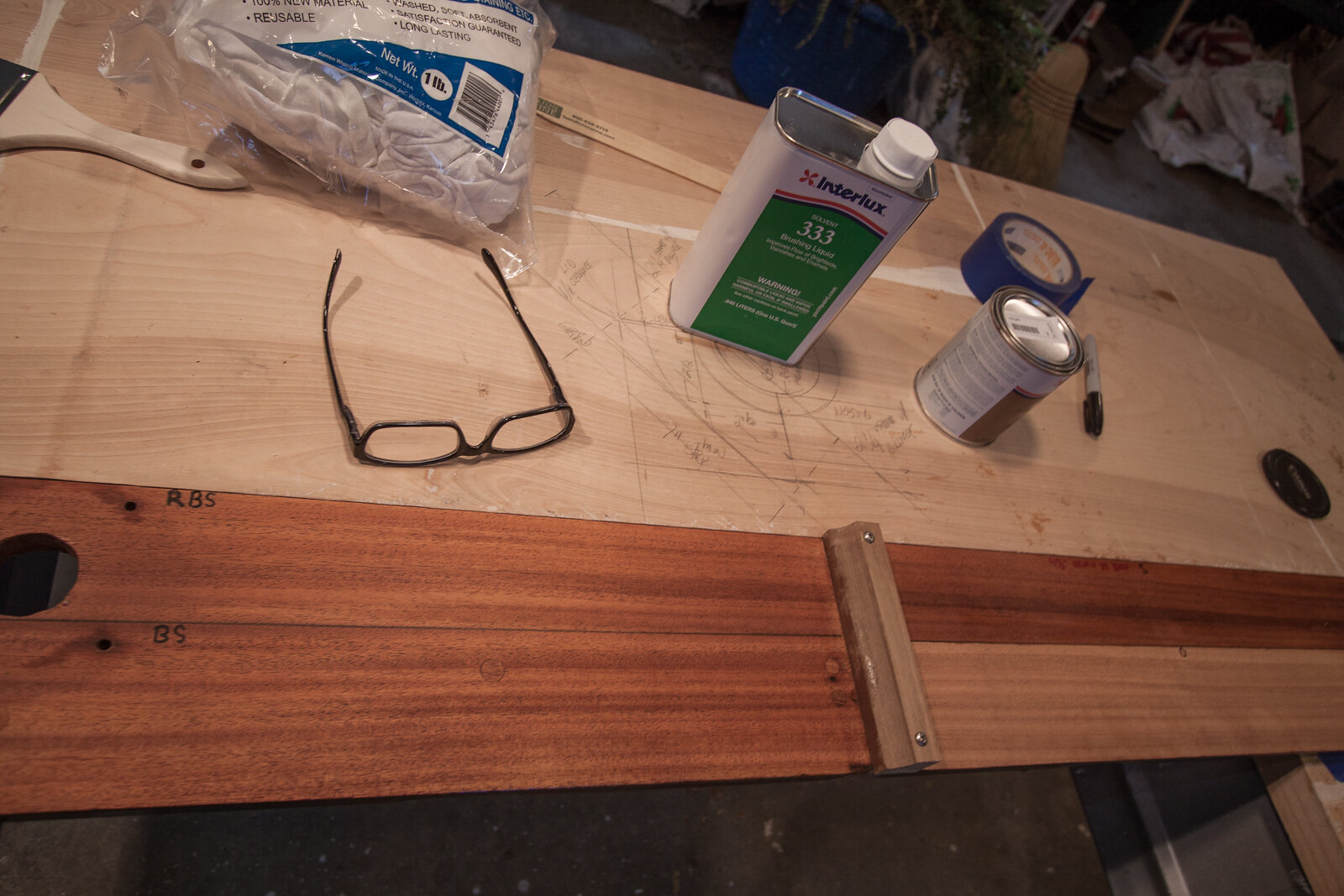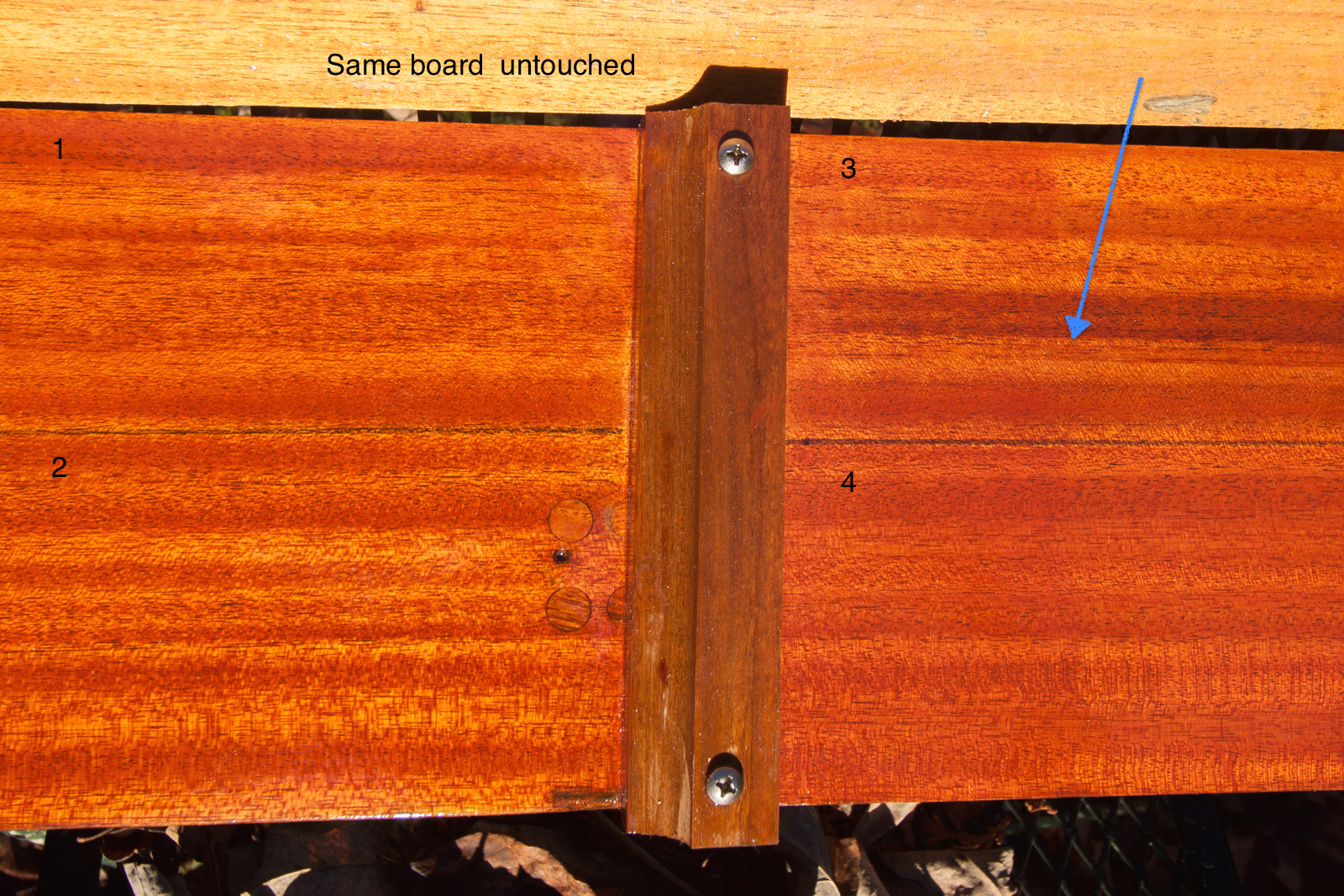Cruising Sailors Forum Archive
Not mine (jobsite), but I remember the melodic quote from a friend. And it's true. Wood is miraculous, yes. 'But plaster (or plastic), isn't always faster', is what I like to say. ![]()
I intend to wood the trunk cabin on my boat over the winter/spring. It's been over 10 years since I did it last and the 'vood' has gone blond from the sun. I plan to use a filler stain this time. Google and Youtube gave me a crash course in this stuff but I wanted to experiment with it.
So I took a salvaged mahogany plank from my old cockpit for testing and ripped it in half. (red arrow-I have plans for the ripped pieces)

Stripping old varnish(the thicker the easier), with a heat gun and stiff scraper is a cinch(especially on horses in a warm shop). It's easy, meditative, pleasant work.
I mounted a cleat mid-way on the stripped plank, to simulate sanding up close to edges like port trim.
To test the effect of sanders with filler stain, I used a 6" RO on one side, a 5" Oscillating sander on the other; both with 80 grit disks. Then a few strokes with a vacuum hand block to remove any swirls(I could see any). In just a few minutes the old wood began to turn pinkish. Done. I don't like sanding, especially by hand, so I don't do much of it, ever.

Trying something new: Wood sealer before stain(on some areas).

Filler stain: It gets thinned to about the consistency of oil enamel - a full coat brushed on - wait 10 minutes or so - wipe off against the grain. Let dry overnight and brush on 2 thin coats of sealer (volatile, fast drying-no sanding between coats). This part was very easy. (Note: Blue arrow shows a blemish on stain usage-my fault;technicality)

Brush on 2 coats of varnish(light sanding between coats), to see what I've got.
Photographed in the sun. Nice! 55 year old wood is beautiful!
I learned the filler stain hue and color - Interlux Chris Craft Red - is just right. Not too brown, not too red(as I often see). It and the sealer coats, really fill the grain. 3 or 4 more coats of varnish will fully fill the pores of the grain. My sectioned experiment answered many of my questions (which I won't bore you with).
In testing a few processes, I'm leaning toward #4 which is actually the least amount of work(sand-filler stain-wood sealer-varnish), and seems to be the best blend of color.
What's your choice? 1,2,3 or 4?

Messages In This Thread
- "Vood is good, but plaster is faster", so said an old Scandinavian craftsman on a jobsite.
- 4

- 4

- Re: Sealer before stain.
- #4 for cabin trunk

- I am way too faliliar with Petit filler/stain...
- 4